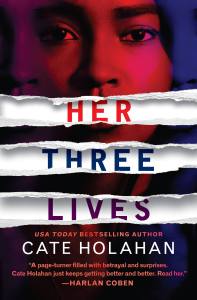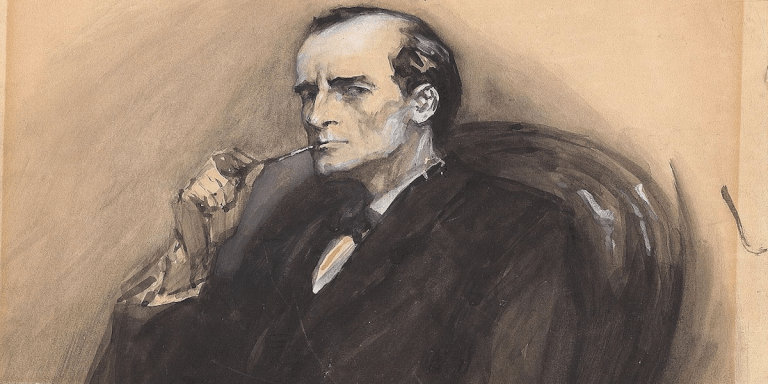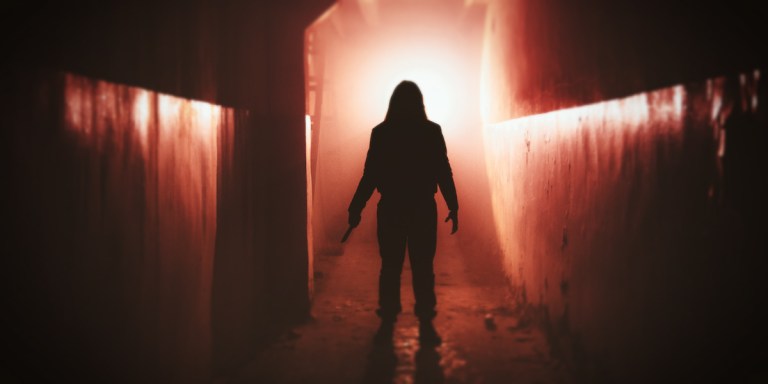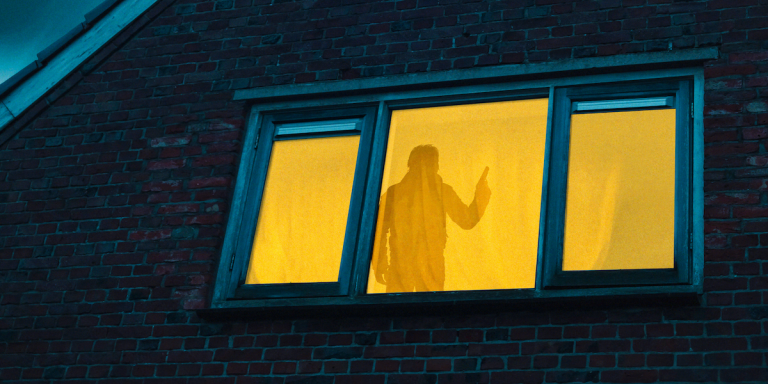Hacking Crime Fiction: The Role of Technology in Suspense
 Silence your cell phones. For the past thirty years, this mantra of moviegoers has been the bane of suspense writers, forcing many of us penning present-day narratives to include some version of the following scene. Our protagonist, brow glistening with fear and exertion, loses, breaks, tosses, drops, is robbed of, or otherwise renders inert their police-dialing, location-tracking, pocket-sized supercomputer. Sometimes, as in the supernatural thriller I devoured earlier this week, the heroine flees to an area without great coverage—a cellar in the middle of the woods, as it were. In the domestic suspense novel that I read last night, the main character abandoned her cellphone in an elevator. Both novels were very different, but they each contained a toss-the-cell scene because they needed it. Otherwise, the physical peril of the main character could be questioned. How bad is the danger, truly, when the cops are on speed dial?
Silence your cell phones. For the past thirty years, this mantra of moviegoers has been the bane of suspense writers, forcing many of us penning present-day narratives to include some version of the following scene. Our protagonist, brow glistening with fear and exertion, loses, breaks, tosses, drops, is robbed of, or otherwise renders inert their police-dialing, location-tracking, pocket-sized supercomputer. Sometimes, as in the supernatural thriller I devoured earlier this week, the heroine flees to an area without great coverage—a cellar in the middle of the woods, as it were. In the domestic suspense novel that I read last night, the main character abandoned her cellphone in an elevator. Both novels were very different, but they each contained a toss-the-cell scene because they needed it. Otherwise, the physical peril of the main character could be questioned. How bad is the danger, truly, when the cops are on speed dial?
Solving the cell phone conundrum is something that nearly every suspense author I know seriously considers when writing. Dealing with it inspired the creation of my upcoming novel, Her Three Lives. However, instead of struggling to create an innovative way to toss the phone and all its helpful properties, I decided to examine how it could become a source of tension. In my book, the phone—along with many of the other home technologies we use to connect us to the authorities—is a cause of disconnection, paranoia, and, ultimately, violence.
In Her Three Lives, a couple traumatized by a home invasion finds that the devices intended to keep them safe become the root of their fears. The story opens with Greg, a wealthy, established 52-year-old architect accustomed to controlling his surroundings. When masked robbers break-into his home, Greg is hit on the head with a crowbar and suffers a cracked skull. While recovering, he is confined indoors and forced to rely on his two-decades younger fiancée, Jade. In hopes of protecting their new home, he installs interactive security cameras all over the house. Soon, he becomes obsessed with watching the live feeds and, gradually, starts to question the on-camera actions of his future wife.
Greg’s suspicions are influenced by his ex-wife and adult children who fear that Jade—a style-influencer and up-and-coming interior designer—might be a gold digger. Jade, for her part, has plenty of secrets and good reasons for keeping them. But is what she hides related to the break-in? Could she have tried to kill Greg? Or is his spying the true problem?
In the story, I include many of the home security devices that I personally use to keep tabs on my house and family. There are internet-connected, streaming Nest cameras and Ring doorbells, which I rely on to monitor my home when away—not to mention use to communicate with delivery men and sometimes my own kids.
The Find My iPhone app is also important to the story. Personally, I love seeing Apple’s familiar icon on my cell screen. My family has the app installed on all of our devices to help in the event of lost electronics. But I can also see how constant location tracking could become detrimental. Once, my ever-practical husband set off the Find My iPhone alarm to locate me in a loud bar. It worked, and I was happy to find him, though the shriek from my purse was embarrassing. I can only imagine how I would have felt about it had I not wanted to be found.
Another device used in my story are drones. As the remote-controlled flying cameras have become less expensive, they’ve gone from military-devices and uber-wealthy playthings to gear that an architect, realtor, amateur photographer, and even outdoor sports enthusiast could conceivably own. That means the average Joe motivated to track someone has another tool in his arsenal, and that crime fiction writers have another stalking device with which to grapple.
As all these technologies become more prevalent, suspense writers are no doubt finding that we have new versions of the cell phone problem. How do we have a character keep a secret when nearly everyone’s history is searchable on the internet and most people have a social media profile somewhere? How do we have an antagonist hide when his or her electronics can all be tracked? How can anyone do anything suspicious in a house with recording devices on 24/7 and an always-listening Alexa or Google Assistant?
With these problems, however, come the potential for writers to explore novel dilemmas. In tossing or keeping these technologies, we suspense writers have an opportunity to probe the very real tension between privacy and convenience that all of us in this tech-driven age must contend with. We all must weigh our desires for a secret, internal life with the demand for technologies that make existence easier. Increasingly, our fiction must reflect the trade-offs we are making in our real lives and examine the consequences. How much disconnection is required to avoid digitally induced paranoia? How much does feeling safe and secure demand turning off?
What happens if we never silence the phone?
About The Author
Cate Holahan is the USA Today bestselling author of domestic suspense novels The Widower’s Wife, One Little Secret, Lies She Told, and Dark Turns. In a former life, she was an award-winning journalist, writing for The Record, The Boston Globe, and BusinessWeek, among others. She was also the lead singer of Leaving Kinzley, an original rock band in NYC.She lives in NJ with her husband, two daughters, and food-obsessed dog, and spends a disturbing amount of time highly caffeinated, mining her own anxieties for material.
Jade Thompson has it all. She’s an up-and-coming social media influencer, and she has a beautiful new home and a successful architect for a fiancé. But there’s trouble behind the scenes. To Greg’s children, his divorce from their mother and his new life can only mean a big mid-life crisis. To Jade, his suburban Connecticut upbringing isn’t an easy match with her Caribbean roots.
A savage home invasion leaves Greg house-bound with a traumatic brain injury and glued to the live feeds from his ubiquitous security cameras. As the police investigate the crime and Greg’s frustration and rage grows, Jade begins to wonder what he may know about their attackers. And whether they are coming back.
As Greg watches Jade’s comings and goings, he becomes convinced that her behavior is suspicious and that she’s hiding a big secret. The more he sees, the more he wonders whether the break-in was really a random burglary. And whether he’s worth more to Jade if he were dead than alive.
By clicking 'Sign Up,' I acknowledge that I have read and agree to Hachette Book Group’s Privacy Policy and Terms of Use
What to Read Next






